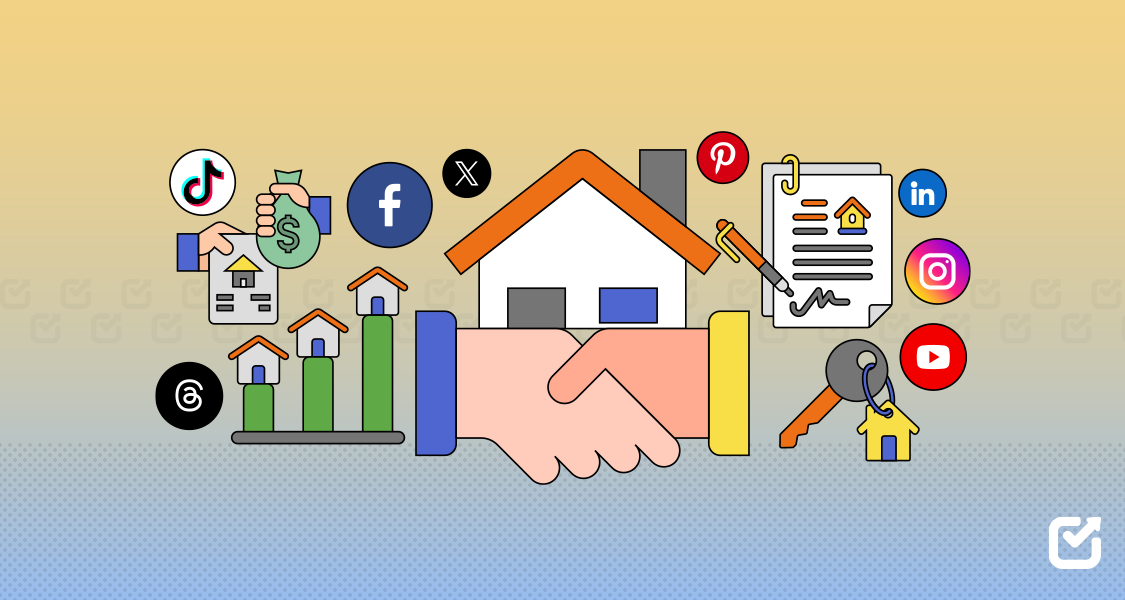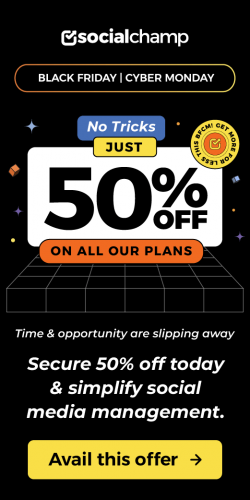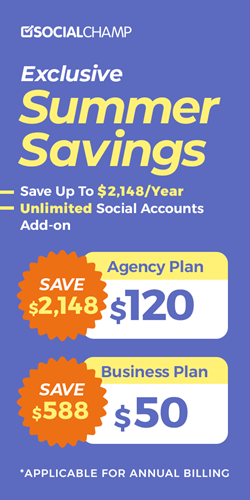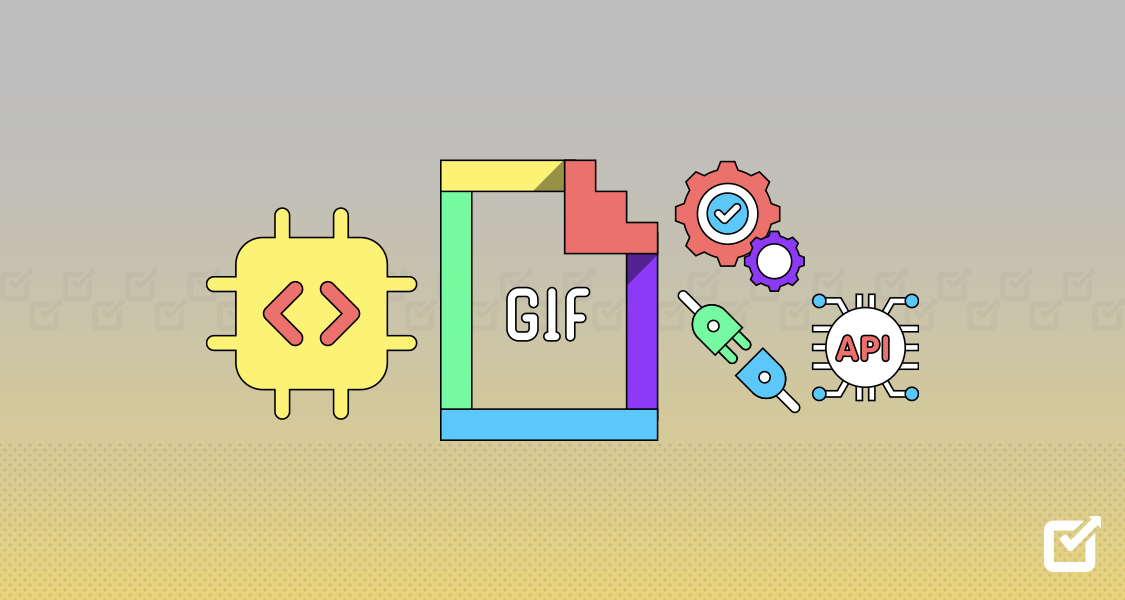Is your SaaS brand on social media yet?
If not. You’re losing significant opportunity costs.
Many software-as-a-service businesses are driving major ROI by leveraging SaaS social media marketing strategy.
You might think that social media is only for B2C, but even if you are a B2B SaaS company, social media is the perfect way to reach your customers.
Get ready to explore the ultimate reasons why your brand needs social media marketing, along with 20 proven strategies and social media management tools for driving growth, building trust, and ultimately increasing sales.
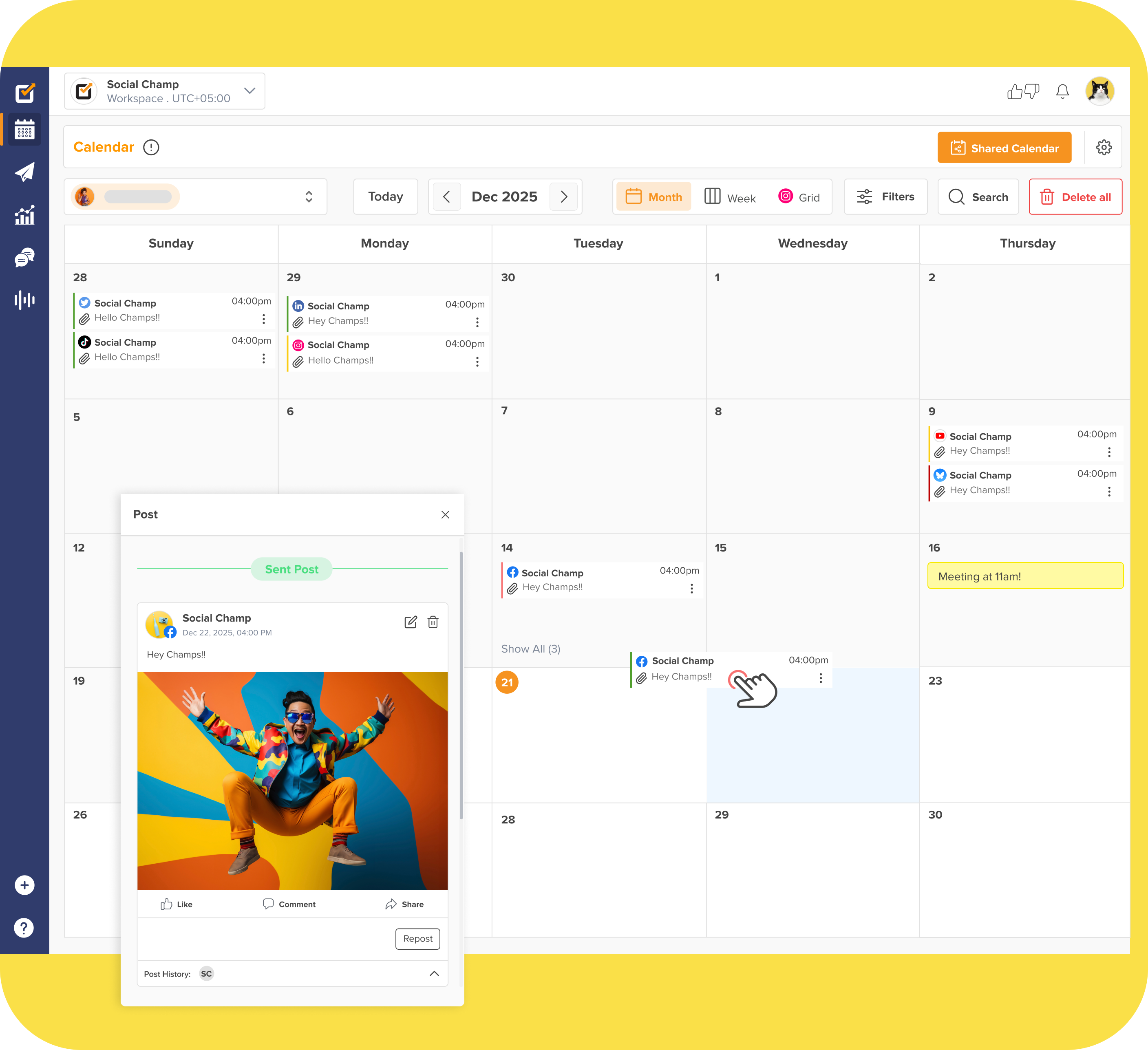
Automate Your SaaS Growth Tactics Now!
Social Champ automates scheduling, streamlines content management, and delivers in-depth analytics—all in one powerful tool.
Short Summary
- Strong social media marketing is key for SaaS companies, helping them boost customer engagement, build authority, and increase sales.
- The preparation phase includes auditing current efforts, analyzing competitors, selecting the right platforms, and planning content with a calendar.
- Effective implementation involves influencer partnerships, video marketing, testimonials, collaborations, paid ads, exclusive offers, and FOMO campaigns.
- The optimization phase focuses on performance measurement, repurposing content, refining what works, customer retention, and social listening.
- Tools like Social Champ help with automation, analytics, and data-driven decision-making.
- Tracking key metrics such as engagement, conversions, and churn rates helps refine SaaS social media strategies for long-term success.
Why Social Media Marketing Is Essential for SaaS in 2025
SaaS social media marketing offers big benefits that can help your business grow.
You will not only maintain an effective social media presence but also position your brand as a top choice or at least a viable alternative in your industry.
But the benefits don’t end here. Let’s discuss the various advantages of social media marketing for SaaS:
-
Brand Awareness
Social media is the perfect stage for SaaS brands to build recognition.
With millions of users actively engaging daily, platforms like LinkedIn, X, and Facebook allow SaaS companies to showcase their expertise, share industry insights, and create a lasting impression.
A well-crafted content strategy ensures that your customers turn to you when they’re ready to buy.
-
Lead Generation
Social media is more than just a branding tool—it’s a lead-generation powerhouse.
Platforms like LinkedIn and X allow SaaS brands to connect with potential customers, nurture relationships, and guide them through the sales funnel.
Running targeted ads, hosting webinars, and sharing gated content like whitepapers or case studies can significantly increase high-quality leads for your SaaS business.
-
Customer Engagement
SaaS companies thrive on customer relationships, and social media provides a direct communication channel.
Engaging with users through comments, polls, and discussions helps brands understand their audience better while building trust and loyalty.
Proactive customer support on social platforms can also enhance user experience, reducing churn and increasing retention.
-
Amplified Website Traffic
A strong social media presence directly impacts website traffic.
Every post, blog share, and ad can drive potential customers to your landing pages, demo sign-ups, and free trials.
SaaS brands that consistently share valuable content on social media experience higher inbound traffic, boosting overall conversion opportunities.
-
Authority Building
Positioning your SaaS brand as an industry leader is crucial for credibility.
Sharing thought leadership content, success stories, and expert opinions establishes authority and trust within your niche.
Platforms like LinkedIn and Medium are excellent places to publish insightful articles that showcase your expertise and attract a loyal audience.
-
Increase ROI
With the right strategy, social media marketing can deliver a significant return on investment.
Paid campaigns, influencer collaborations, and organic engagement tactics help SaaS companies maximize their marketing budget while reaching a highly targeted audience.
The ability to track analytics in real-time also ensures that brands optimize their efforts for the best results.
-
Cost-Effective Advertising
Compared to traditional advertising, social media marketing is far more affordable and efficient.
SaaS brands can leverage paid ads on platforms like Facebook, LinkedIn, and X with precision targeting, ensuring every dollar spent reaches the right audience.
With A/B testing and detailed analytics, you can continuously refine your strategy for the best cost-per-acquisition (CPA).
-
Increased Brand Visibility
With billions of active users on social media, SaaS companies can significantly expand their reach and visibility.
A consistent posting schedule, engaging content, and strategic collaborations can place your brand in front of new audiences daily.
Increased visibility leads to more awareness, more engagement, and ultimately, more conversions.
B2B vs. B2C SaaS Social Media Marketing: Key Differences
Social media marketing is essential for SaaS businesses, but the approach differs significantly between B2B and B2C models.
While both leverage social media to engage their audiences, drive conversions, and build brand awareness, the strategies, content formats, and success metrics vary based on target customers, sales cycles, and engagement styles.
Let’s examine the key differences between B2B and B2C SaaS social media marketing and explore the best approaches for each.
-
Target Audience & Engagement Approach
B2B SaaS Social Media Marketing
The B2B SaaS target audience consists of business decision-makers, executives, and industry professionals looking for software solutions to improve productivity, efficiency, or cost savings.
The engagement approach is rational and value-driven, with content focusing on in-depth insights, ROI, and long-term benefits.
Buyers often go through multiple touchpoints before purchasing, requiring consistent nurturing through informative content.
B2C SaaS Social Media Marketing
BSC’s target audience is individual consumers looking for software that improves their lifestyle, entertainment, or convenience.
The engagement approach is emotional and experience-driven, emphasizing ease of use, affordability, and instant benefits.
The B2C sales cycle is much shorter, with most decisions made impulsively or based on social proof and recommendations.
-
Social Media Platforms & Content Formats
B2B SaaS: Professional & Insight-Driven Platforms
B2B SaaS brands focus on platforms that cater to professionals, allowing for networking, thought leadership, and lead generation:
- LinkedIn: Used by 94% of B2B marketers, LinkedIn is the most effective platform for B2B SaaS. It shares case studies, thought leadership content, and company updates.
- Twitter (X): Used for industry news, product updates, and real-time business engagement.
- YouTube & Webinars: Ideal for long-form product demos, customer success stories, and educational content.
- Email & Newsletters: B2B SaaS marketers integrate social media marketing with emails and newsletters for lead nurturing.
Content Types for B2B SaaS:
- Whitepapers & E-books
- Case Studies & Success Stories
- Webinars & Podcasts
- Industry Reports & Data-Backed Insights
B2C SaaS: Visual & Entertaining Platforms
B2C SaaS brands focus on visually engaging platforms that enable brand storytelling, virality, and high user engagement:
- Instagram & Facebook: Used for interactive posts, user-generated content, and engaging visuals.
- TikTok & YouTube Shorts: Leverage short-form video content to showcase features, tutorials, and testimonials.
- Pinterest & Twitter (X): Useful for lifestyle-driven SaaS products, especially in creative niches like design or productivity apps.
Content Types for B2C SaaS:
- Short-Form Video & Reels
- Influencer Collaborations & User-Generated Content
- Engaging Polls & Memes
- Product Demos & Tutorials
-
Decision-Making Process & Churn Rates
B2B SaaS: Long-Term Investment
In B2B SaaS, the decision-making process is a long-term investment involving multiple stakeholders, each with specific concerns and requirements.
Since these purchases are logic-driven, businesses prioritize factors like ROI, security, and scalability before committing to a solution.
The high switching costs and long-term contracts associated with B2B SaaS contribute to lower churn rates, as companies prefer stability and seamless integration over frequent changes.
B2C SaaS: Fast Decision Making but High Churn
B2C SaaS operates much faster, with individual consumers making decisions based on emotions, convenience, and impulse.
Unlike B2B, users are more likely to switch services if they find a better deal, experience dissatisfaction, or simply lose interest.
This leads to higher churn rates, making strong user retention strategies essential for sustaining growth and profitability.
Featured Article: Social Media Audience Analysis: How to Understand and Engage Your Audience in 2025
20 Proven Strategies to Dominate SaaS Social Media Marketing
Saas social media marketing isn’t easy. It takes a lot of trial and error to find what works best for your particular niche and marketing approach. But don’t worry, to help you out, I have listed 20 best SaaS SMM strategies which are proven to work.
Read on to find out!
-
Run Your Marketing Audit
Before making any significant moves, take a step back and analyze your current marketing performance.
Doesn’t matter if your brand is already on social media or not; the goal here is to know where you are standing, what your weaknesses are, and what your strengths are.
Call it a marketing SWOT analysis if you will.
A marketing audit also means checking if your messaging and brand voice align with your SaaS company’s values.
These small but crucial details make a massive difference in how people perceive your brand.
-
Conduct Competitor Analysis
Your competitors have already done a lot of trial and error for you—so why not learn from them?
Take a close look at their social media strategies.
What kind of content gets the most engagement? Which platforms are they most active on? Are they using paid ads, influencer partnerships, or viral campaigns?
Competitor analysis isn’t about copying them. It’s about spotting gaps and opportunities.
-
Choose the Right Platforms
Not every social media platform is a good fit for every SaaS business.
B2B SaaS brands often perform best on LinkedIn and X, while B2C SaaS companies might thrive on Instagram and TikTok.
The key is figuring out where your audience is most active.
-
Plan Your Content Strategy
A solid content strategy ensures consistency, brand alignment, and audience growth.
Start by defining your content pillars—broad themes that will guide your posts.
This could be product tutorials, customer success stories, industry insights, or behind-the-scenes company updates.
Balance is everything. If your feed is nothing but promotions, people will tune out.
Mix invaluable, engaging content that educates or entertains your audience.
SaaS social media marketing isn’t just about selling but building relationships and trust.
-
Create a Content Calendar
A content calendar keeps you organized and ensures that you’re always prepared.
Without one, you’ll constantly find yourself scrambling for last-minute ideas.
It also helps you maintain a consistent posting schedule, crucial for engagement and brand visibility.
Planning in advance allows you to align your posts with product launches, seasonal trends, and key events.
You can also ensure that you vary your content types—mixing videos, carousels, text posts, and interactive content.
The more structured your approach, the better your results.

Social Champ’s Content Calendar -
Invest in a Social Media Management Tool
Managing multiple platforms manually is a recipe for burnout.
A good social media management tool saves time, improves efficiency, and helps you stay on top of analytics.
With a tool like Social Champ, you can schedule posts in advance, track engagement, and manage multiple accounts in one place.
Automation doesn’t mean losing authenticity—it means freeing up time to focus on strategy and engagement.
Instead of spending hours posting manually, you can dedicate that energy to creating high-quality content and interacting with your audience in real time.
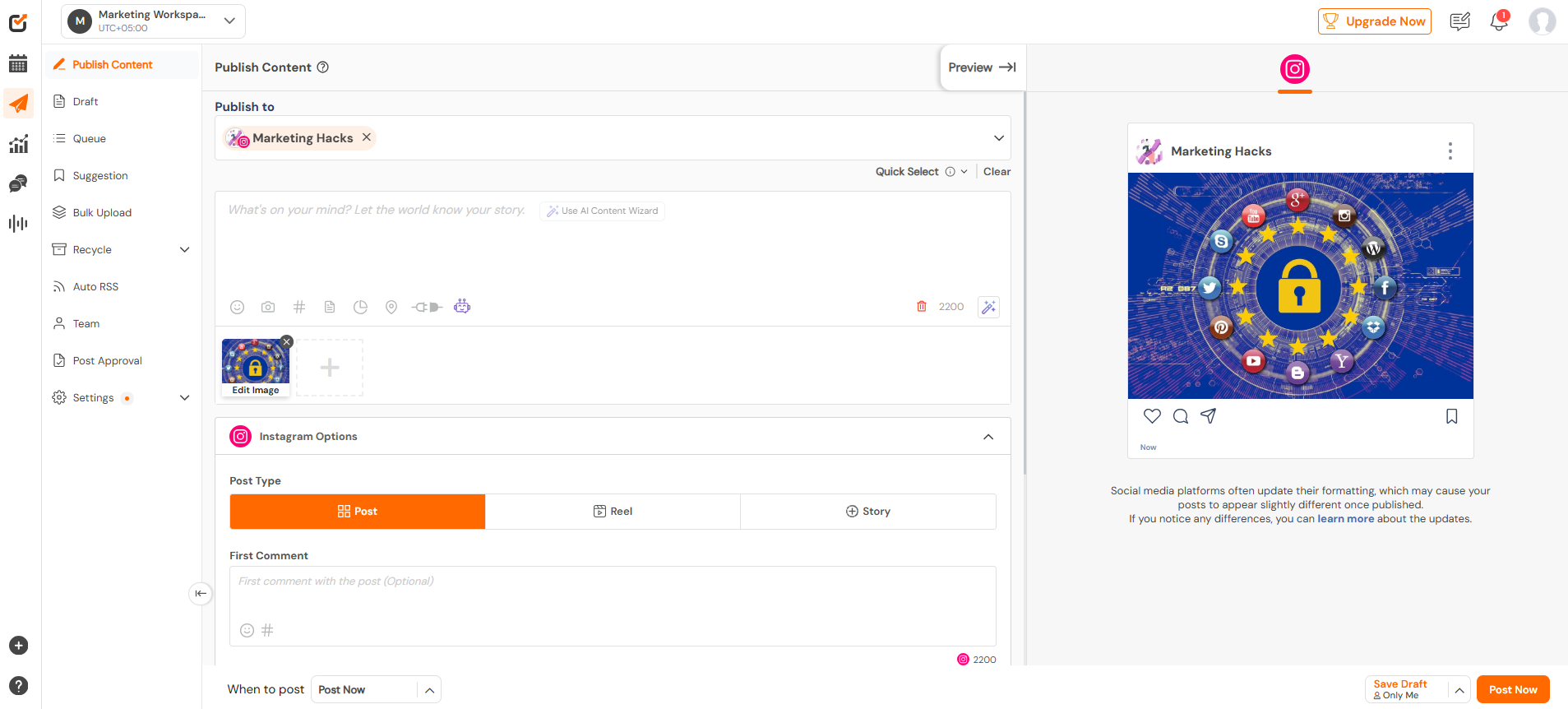
Social Champ’s Dashboard

Streamline Your SaaS Social Strategy With One Powerful Tool!
Plan, publish, and optimize your content with an all-in-one platform designed for scaling SaaS brands.
-
Partner With Influencers
Influencer marketing works for both B2B and B2C SaaS—but the approach differs.
For B2B SaaS, partnering with industry experts, LinkedIn thought leaders, and YouTube tech reviewers helps build credibility and attract high-intent buyers.
A testimonial from a respected voice in the industry can drive conversions better than any sales pitch.
For B2C SaaS, social media influencers on Instagram, TikTok, and YouTube can create engaging content that introduces your product to a wider audience.
Whether it’s a fitness app demo on TikTok or a lifestyle vlogger reviewing a budgeting tool, influencer collaborations help drive awareness and quick sign-ups.

SaaS Company Canva Partnering With Influencer Amber Fi Glow -
Utilize Video Marketing
People prefer watching over reading, and video marketing delivers complex ideas in an easily digestible format.
Short, snappy videos on social media, landing pages, and ads work wonders for grabbing attention, while longer-form content like webinars, tutorials, and product walkthroughs helps build trust.
Platforms like TikTok, Instagram Reels, YouTube, and LinkedIn offer excellent reach.
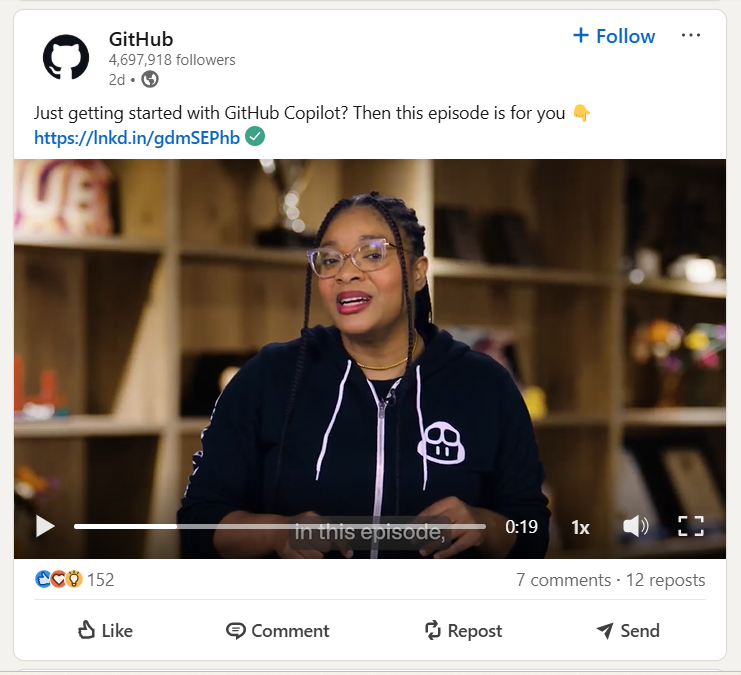
Screenshot From Video Posted on GitHub’s LinkedIn -
Customer Testimonials
Nothing builds credibility like real users vouching for your product.
Testimonials—whether in the form of reviews, video testimonials, or social media shoutouts—showcase your product’s value in a way no sales pitch can.
Encourage satisfied customers to share their experiences on social media and feature the best ones on your profiles.
A well-placed testimonial on your LinkedIn page, Instagram Story, or Twitter (X) post can nudge potential users toward making a decision.
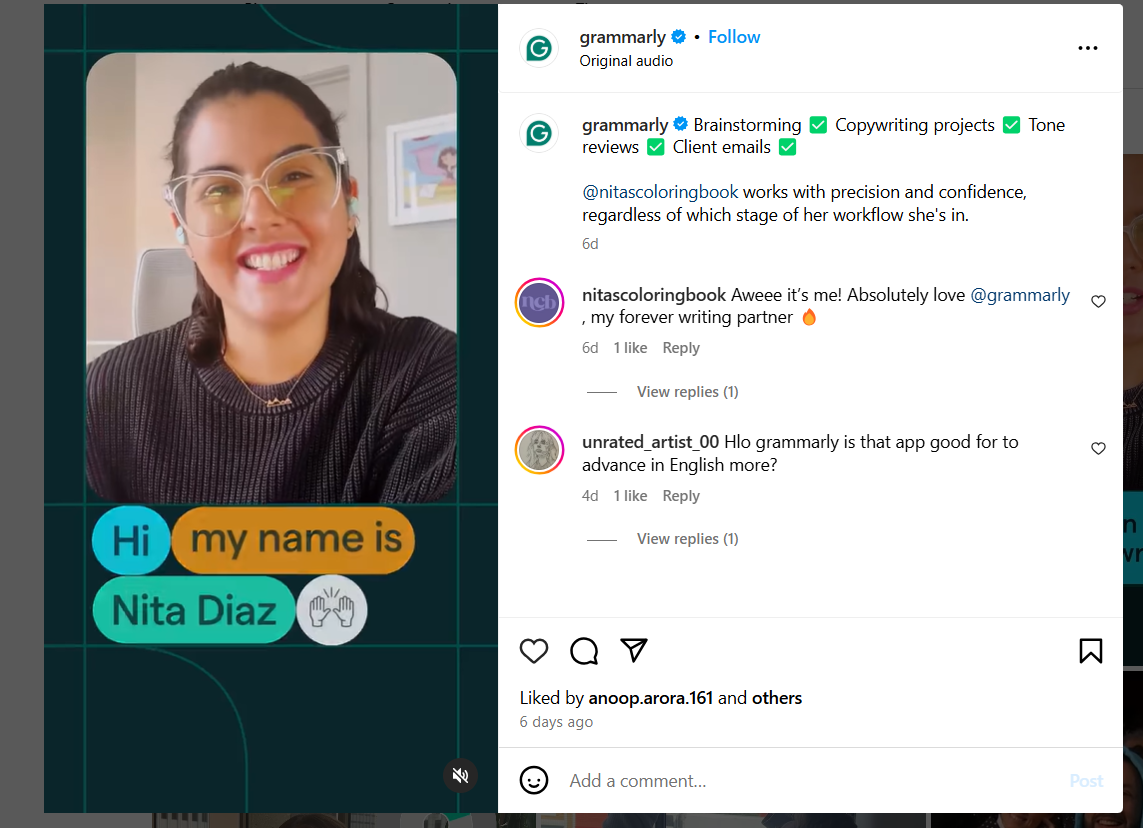
Grammarly Posting Customer Stories -
Collaborate With a Relevant Business to Expand Your Reach
Think of how many times Netflix has partnered with another brand to expand its reach or even to promote its originals.
For example, launching a Netflix Hub with Spotify to partnering with Nike.
Or promoting its highest-grossing shows through collaborations like Stranger Things with Domino’s or The Chilling Adventures of Sabrina with Nyx Cosmetics.
Your SaaS company might not be Netflix, but it has similar partnering opportunities, and taking advantage of them can do wonders for your SaaS social media marketing goals.
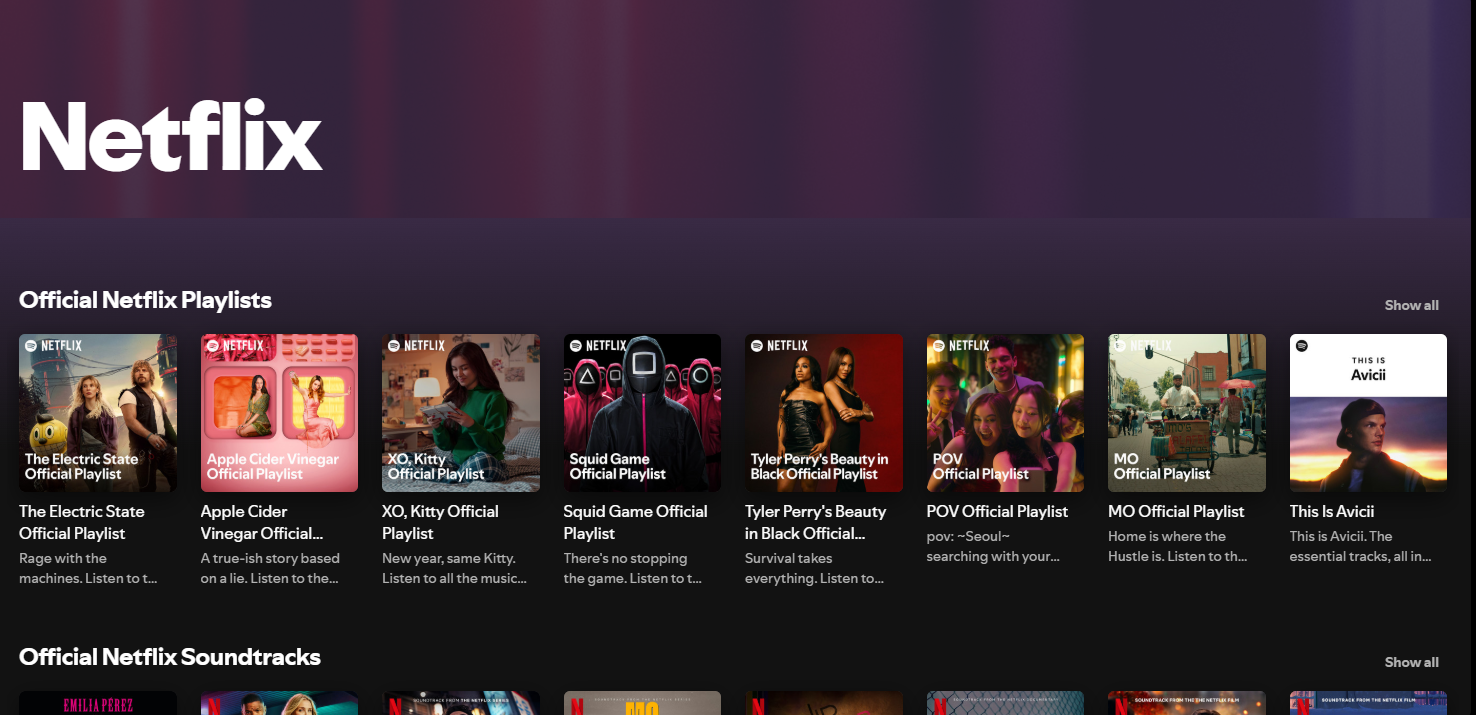
Netflix Hub on Spotify -
Use Paid Advertising
Organic reach is great, but sometimes, you need to invest in your content.
LinkedIn Ads work well for B2B, while Facebook and Instagram ads shine for B2C SaaS.
The key is to target the right audience with the right message—otherwise, you’re burning money.

Atlassian’s Ad on YouTube -
Give Exclusive Offers, Content, or Perks
People love feeling like they’re getting something special.
Limited-time discounts, free trials, early access to new features, or VIP content can give prospects the extra push they need to sign up.
A well-timed social media-exclusive offer—like “Sign up today and get 3 months free” (Good ol’ Netflix days) —can create urgency and boost conversions.
Even gated content, such as ebooks, toolkits, or private webinars, can be effective lead magnets, drawing in interested users.
-
Create the FOMO Campaign
The fear of missing out is real; SaaS brands can leverage it to drive engagement.
Limited-time deals, countdown timers, exclusive beta invites, and product drops all create excitement and urgency.
This strategy mainly works for B2C businesses.
To trigger FOMO, you can build a community of loyal customers and provide them with exclusive perks.
You can also offer exclusive content or features available at your service, utilize social media to create buzz around it, and customers will flock towards your business.
-
Share Company Culture
Showcasing company culture, team highlights, and behind-the-scenes moments humanizes your brand and builds trust.
Sharing office life, team wins, or fun company traditions on platforms like Instagram, Twitter (X), and LinkedIn creates a more personal connection with your audience.
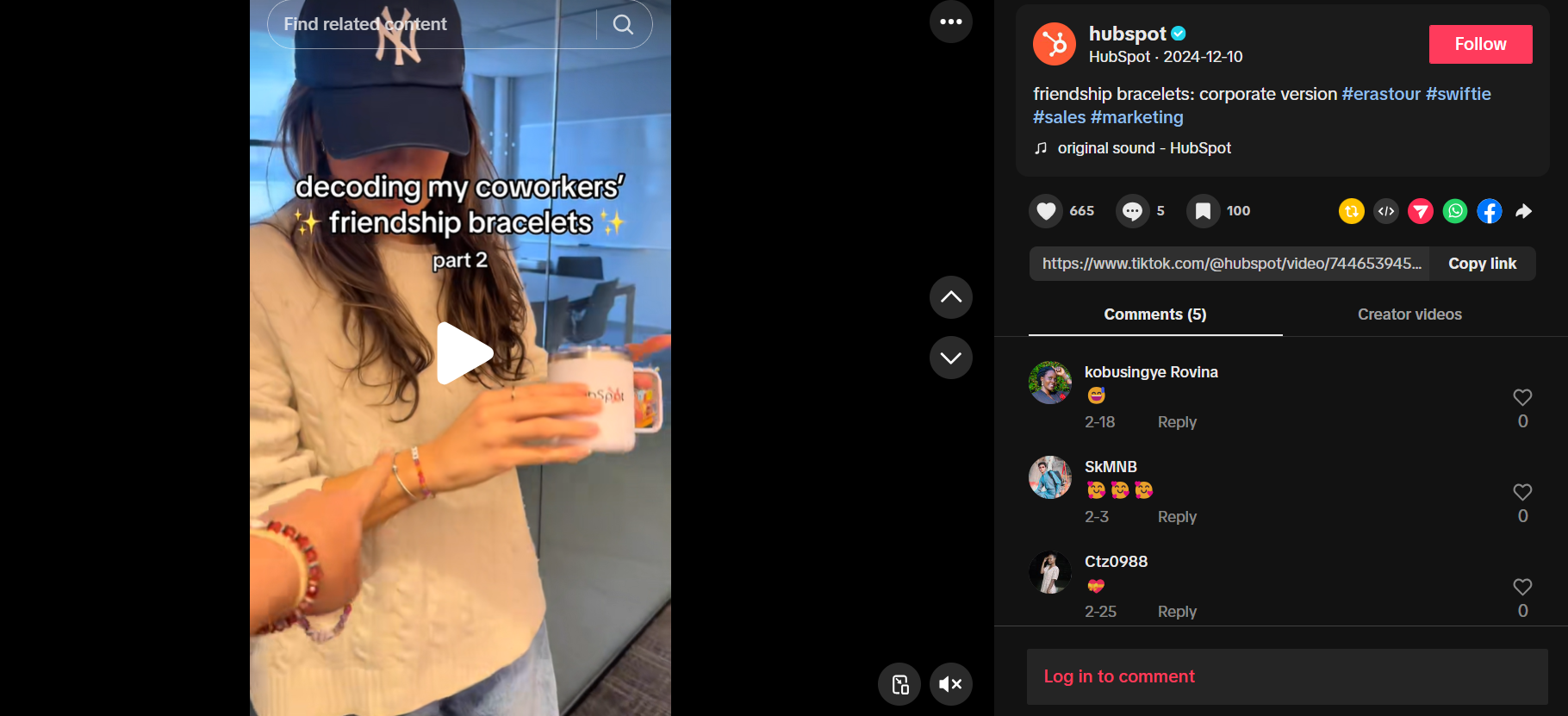
HubSpot Showing Its Company Culture on TikTok -
Tailor Social Media Content With Different Holidays, Special Days, or History Months
Seasonal marketing keeps your content fresh and relevant.
Aligning posts with major holidays, cultural events, or awareness months creates opportunities for engagement.
Whether it’s a Halloween-themed promo or a Black Friday deal, tapping into these moments makes your brand part of the larger conversation.
Even industry-specific days—like National Tech Day or Cybersecurity Awareness Month—can be leveraged to showcase your expertise.
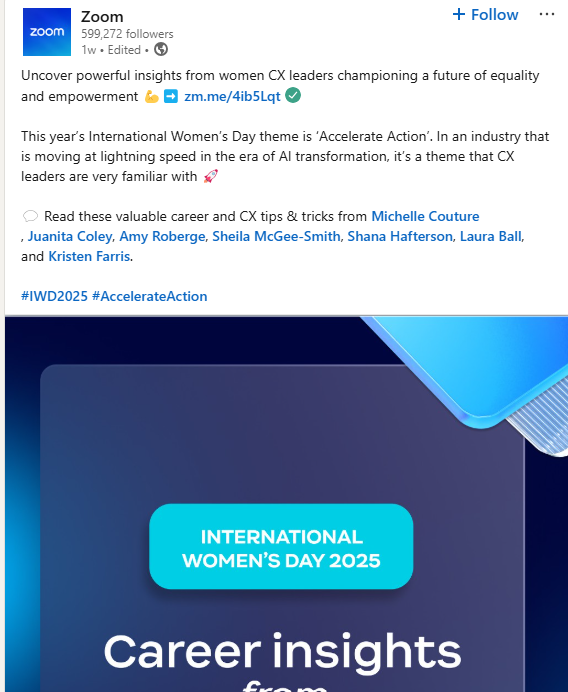
Zoom’s LinkedIn Post on International Women’s Day -
Measure Performance
You can’t improve what you don’t measure.
Tracking key metrics like engagement rates, click-through rates, conversions, and customer acquisition costs gives you a clear picture of what’s working and what’s not.
For B2B SaaS, lead generation and pipeline influence are crucial, while B2C SaaS companies focus on trial sign-ups and user retention.
Tools like Social Champ help simplify this process by offering in-depth analytics, so you can spot trends and optimize future content accordingly.
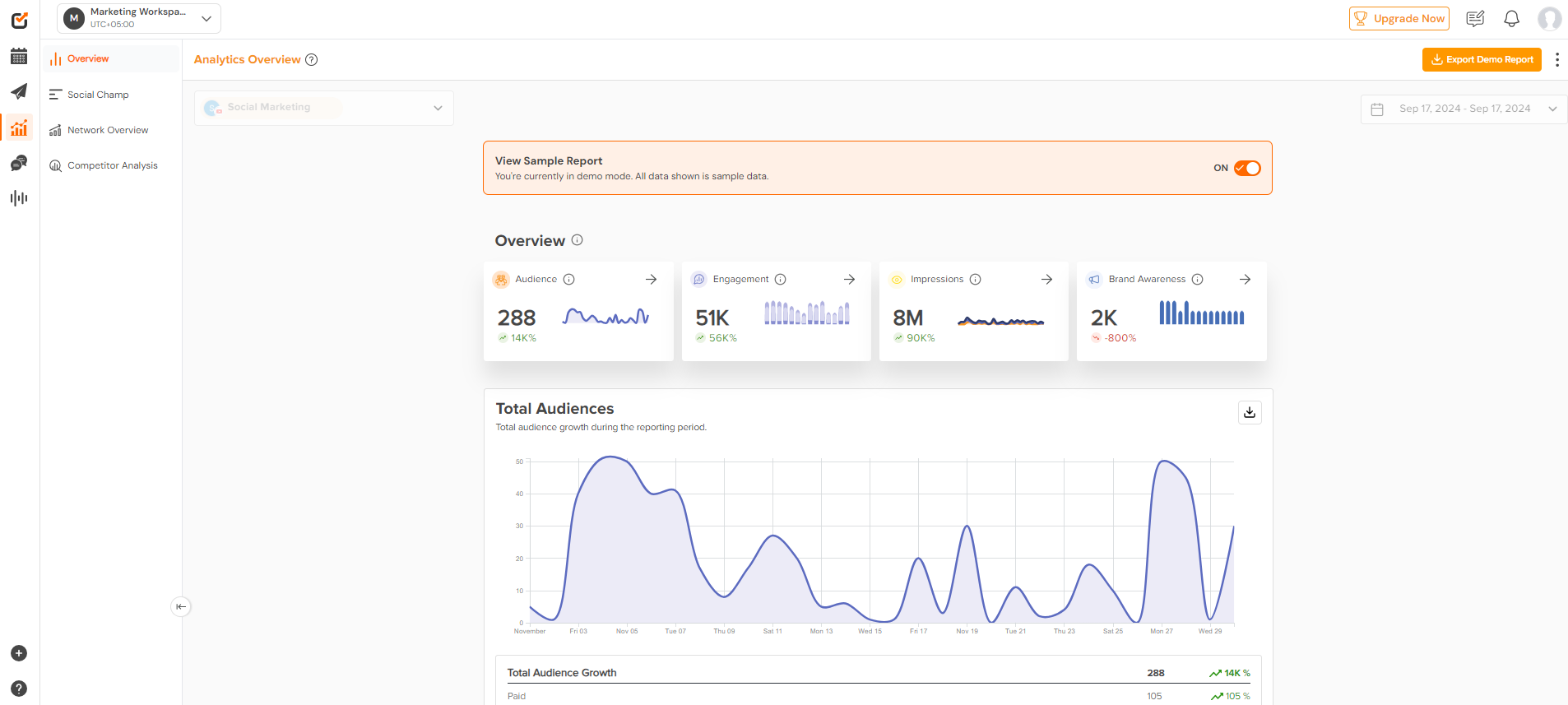
Social Champ’s Analytics -
Cross-Promote and Repurpose Content
A single post shouldn’t have a one-time use.
High-performing content can be repurposed across multiple platforms to maximize its reach.
A LinkedIn post can turn into a Twitter thread, a webinar into short Instagram reels, or a blog post into an infographic for Pinterest.
Cross-promotion also helps tap into different audience segments—what resonates on one platform might perform even better elsewhere.
Just make sure to tweak the format while keeping the core message intact.
-
Engage in Social Listening
Social listening and sentiment analysis are the perfect way to monitor your brand’s perception.
Are users excited about your latest feature? Are they frustrated with a competitor and looking for alternatives?
These insights help you fine-tune your messaging, address concerns before they escalate, and spot trends that inform future campaigns.
Social Champ offers the best social listening and AI-powered sentiment analysis tools to help you fine-tune your SaaS social media marketing strategy.
-
Keep What Works and Discard What Doesn’t
Not every campaign will be a home run, and that’s okay.
The goal is to identify the patterns behind successful content and refine your approach.
If tutorial videos drive engagement but static posts fall flat, focus more on video marketing.
If a particular ad format delivers higher conversions, double down on it.
Social media marketing is a constant cycle of testing, learning, and adapting—sticking to what works and ditching what doesn’t keeps your strategy effective.
-
Strategize to Retain Customers and Audience Engagement
Acquiring new users is essential, but retaining them drives long-term growth.
Consistently engaging your audience through community-driven content, user-generated posts, and interactive Q&As keeps them connected to your brand.
For B2B SaaS, nurturing relationships through LinkedIn discussions, case studies, and expert webinars builds credibility.
In B2C SaaS, gamification, loyalty rewards, and personalized content help keep users hooked.
Featured Article: How Content Localization Can Boost Your Social Media Strategy in 2025
Optimizing Your SaaS Social Media Strategy for Maximum Growth
SaaS brands thrive when they align their social media efforts with business goals, whether that’s increasing sign-ups, improving customer retention, or strengthening brand authority.
This is where tools like Social Champ make a difference.
AI-driven features, scheduling automation, and in-depth analytics help SaaS companies maximize efficiency while staying consistent.
From content recommendations to sentiment analysis, Social Champ’s insights ensure that your posts are frequent and impactful.
Plus, its integrations with multiple platforms make it easier to manage everything from one dashboard, freeing up time for strategy rather than manual posting.
Beyond automation, optimizing your strategy means observing what works.
Experiment with different content formats, test ad creatives, and refine your engagement tactics based on audience response.
The more agile your approach, the more effectively you can grow and nurture your community.
Measuring & Improving Your SaaS Social Media Performance (Key Metrics)
Tracking performance is non-negotiable for any SaaS brand looking to scale on social media.
While vanity metrics like follower count can be tempting to focus on, the real game-changers are the numbers that reflect engagement, retention, and conversions. Here are some key metrics to monitor:
- Engagement Rate: Likes, comments, shares, and overall interaction with your content.
- Click-Through Rate (CTR): The percentage of people clicking on your links, showing how compelling your posts are.
- Conversion Rate: How many social media users turn into trial users, paying customers, or leads.
- Customer Acquisition Cost (CAC): How much you spend acquiring a customer through social media.
- Customer Lifetime Value (CLV): The projected revenue a customer brings over time, helping balance CAC.
- Churn Rate: The percentage of users canceling subscriptions after signing up, indicating retention success.
- Social Share of Voice (SSoV): How much your brand is mentioned compared to competitors in industry conversations?
Social Champ simplifies performance tracking by providing in-depth analytics across platforms.
You can identify what’s working and where adjustments are needed with detailed reports on engagement, reach, and conversions.

Your Social Media, Fully Automated!
Save time, boost engagement, and scale your SaaS brand with Social Champ. Try it now!
Final Thoughts
When social platforms are dominating every field, having an effective SaaS social media marketing strategy shouldn’t be ignored.
Many B2B to B2C SaaS companies are already leveraging this marketing pathway, so why shouldn’t you?
Create a marketing plan, choose the right platforms, and invest in Social Champ’s social media management tool to make your SMM strategy effortless and result-driven.


